Ski: 2022-2023 Black Crows Atris, 184.3 cm
Test Location: Mt. Crested Butte & Wolf Creek, CO
Days Skied: 7
Available Lengths: 172.1, 178.4, 184.3, 190.2 cm
Blister’s Measured Tip-to-Tail Length (straight-tape pull): 182.6 cm
Stated Weight per Ski: 1975 grams
Blister’s Measured Weight per Ski: 1946 & 1962 grams
Stated Dimensions: 138-105-122 mm
Blister’s Measured Dimensions: 137.2-103.9-121.8 mm
Stated Sidecut Radius (184 cm): 20 meters
Measured Tip & Tail Splay (ski decambered): 59.5 mm / 41 mm
Measured Traditional Camber Underfoot: 3.5 mm
Core Materials: poplar + fiberglass laminate
Base: sintered
Factory Recommended Mount Point: -7.9 cm from center; 83.4 cm from tail
Boots / Bindings: Tecnica Mach1 MV 130 / Salomon Warden 13

Intro
The Black Crows Atris is now over eight years old, and since then it’s not only become a common sight around my ski resorts (and backcountry skin tracks), but it’s also gone through a few revisions.
For 22/23, Black Crows opted to make a few changes to this playful all-mountain ski, most notably slimming the waist from 108 mm to 105 mm, though the overall silhouette remained quite similar.
Now that we’ve had a chance to ski the latest Atris in everything from super deep snow to firm early-season groomers (see our Flash Review for our initial impressions), it’s time to chime in.
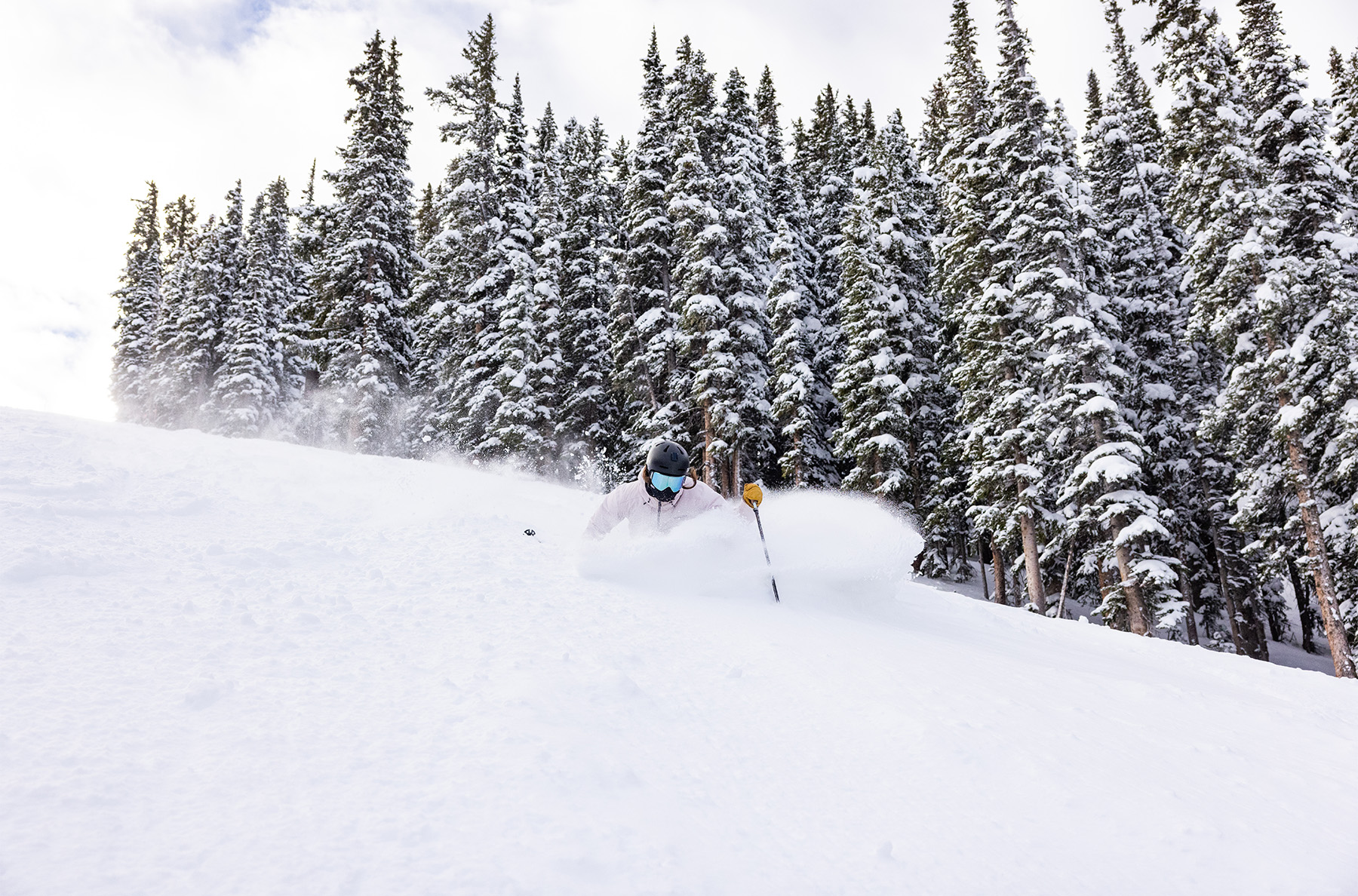
What Black Crows says about the Atris
“This is the third edition of this iconic Blackcrows ski that first appeared in 2014. For this new 2023 version, it is slightly refined, to gain even more accessibility and versatility. It is truly the everyday big mountain ski, for skiers who like powder but who want impeccable behaviour in all conditions. The lines have been revised and will distinguish it from its predecessors for the discerning eye, but the essential is inside, for a ski that achieves its objectives and delights the heart of the most demanding.”
Construction & Women’s Atris Birdie
As far as we can tell, there’s no significant change here — the latest Atris still features a fairly simple construction, with a poplar wood core, fiberglass laminate, and a sintered base.
Same as before, the Atris and women’s Atris Birdie share the same construction, but are offered in different lengths and graphics.
Shape / Rocker Profile
Apart from the graphics, you could easily mistake the 22/23 Atris for the V2 19/20–21/22 version. They look very similar. This ski still features a bit of early tapering at the tips and tails, though the ends of the ski are still fairly blocky / not pointy. The rocker profile looks similarly … similar, with a notable amount of tip and tail rocker, but nothing wildly out of the ordinary for a playful all-mountain ski around this width.
Flex Pattern
Here’s how we’d characterize the flex pattern of the Atris:
Tips: 7
Shovels: 7-7.5
In Front of Toe Piece: 7.5-9
Underfoot: 10
Behind the Heel Piece: 10-8.5
Tails: 8-7
Overall, the flex pattern of the new Atris feels very similar to the previous version of the Atris. The areas just outside of the bindings do feel a touch softer, while the shovels feel slightly stiffer. Overall, it’s a ski with maybe slightly stiffer than average tips and shovels, but with a fairly slow ramp-up in stiffness as you move from the tips and tails to the stiffer area around the bindings.
Sidecut Radius
No big change here; the new Atris still features a stated sidecut radius of 20 meters for the 178 cm through 190 cm lengths. The 160, 166, and 172 cm lengths feature a slightly shorter stated sidecut radius of 19 meters.
Mount Point
Our measured mount points of the V2 and V3 Atris are nearly identical. The newest V3 version’s recommend mount point is about -7.9 cm from true center, which is a bit closer to center than some purely directional skis, but not as close to center as some more freestyle-oriented skis.
Weight
Given that it didn’t see a major change to its core construction, it comes as little surprise that the new Atris weighs about the same as the previous generation. At about 1950 grams per ski for the 184 cm length, the Atris is fairly light for its size, but there are plenty of skis around the same weight in its class.
For reference, here are a number of our measured weights (per ski in grams) for some notable skis. Keep in mind the length differences to try to keep things apples-to-apples.
1761 & 1778 Zag Slap 104, 176 cm (21/22–22/23)
1800 & 1804 Head Kore 105, 184 cm (21/22–22/23)
1820 & 1821 Majesty Havoc Carbon, 186 cm (20/21–22/23)
1836 & 1838 Armada ARW 106 UL, 180 cm (21/22–22/23)
1847 & 1854 Wagner Summit 106, 172 cm (21/22–22/23)
1875 & 1881 Line Sir Francis Bacon, 184 cm (19/20–22/23)
1878 & 1891 Salomon QST Stella 106, 173 cm (22/23)
1905 & 1919 J Skis Slacker, 188 cm (20/21–22/23)
1920 & 2006 RMU North Shore YLE 110, 186 cm (21/22–22/23)
1946 & 1962 Black Crows Atris, 184 cm (22/23)
1947 & 2011 4FRNT Devastator, 186 cm (20/21–22/23)
1951 & 1953 Elan Ripstick 106, 188 cm (20/21–22/23)
1951 & 1957 RMU Apostle 3.0 106 Wood, 184 cm (21/22–22/23)
1958 & 1960 Faction Dancer 3X, 172 cm (22/23)
1964 & 1972 Moment Deathwish, 184 cm (19/20–20/21)
1970 & 1993 Moment Deathwish 104, 184 cm (21/22–22/23)
1993 & 2026 Black Crows Atris, 184.2 cm (19/20–21/22)
1997 & 2001 Zag Slap 104, 188 cm (21/22-22/23)
1999 & 2020 Rossignol BLACKOPS Sender Ti, 180 cm (20/21–22/23)
2008 & 2065 Wagner Summit 106, 186 cm (20/21–22/23)
2010 & 2023 Moment Commander 98, 182 cm (20/21–22/23)
2011 & 2028 Moment Wildcat 108, 184 cm (19/20–20/21)
2011 & 2046 Elan Ripstick 106 Black Edition, 188 cm (21/22–22/23)
2022 & 2046 DPS Foundation Koala 103, 184 cm (21/22–22/23)
2046 & 2120 Black Crows Corvus, 188 cm (18/19–22/23)
2073 & 2074 Season Nexus, 183 cm (20/21–22/23)
2074 & 2088 Line Blade Optic 104, 178 cm (22/23)
2110 & 2119 Moment Wildcat 108, 190 cm (19/20–20/21)
2112 & 2125 4FRNT MSP 107, 187 cm (18/19–22/23)
2068 & 2178 Salomon QST 106, 181 cm (22/23)
2120 & 2134 Blizzard Rustler 10, 188 cm (19/20–22/23)
2145 & 2167 Sego Big Horn 106, 187 cm (20/21–22/23)
2153 & 2184 Rossignol BLACKOPS Sender Ti, 187 cm (20/21–22/23)
2165 & 2211 K2 Mindbender 108Ti, 186 cm (19/20–21/22)
2165 & 2219 Icelantic Nomad 105, 191 cm (19/20–20/21)
2170 & 2180 Dynastar M-Free 108, 182 cm (20/21–22/23)
2177 & 2178 Moment Commander 108, 182 cm (20/21–22/23)
2232 & 2242 Blizzard Cochise 106, 185 cm (20/21–22/23)
2230 & 2290 Line Blade Optic 104, 185 cm (22/23)
2295 & 2344 J Skis Hotshot, 183 cm (20/21–22/23)
2302 & 2342 Dynastar M-Free 108, 192 cm (20/21–22/23)
2312 & 2386 Prior Husume, 188 cm (17/18–22/23)
2353 & 2360 Volkl Katana 108, 184 cm (20/21–22/23)
2449 & 2493 J Skis Hotshot, 189 cm (20/21–21/22)
Now, onto how all of this translates on snow:
FULL REVIEW
Luke Koppa (5’8”, 155 lbs / 173 cm, 70 kg): For reference, I already got along quite well with the V2 (19/20–21/22) Atris, so I was curious to see if the new version was a case of “revolution” or “evolution.” After several days in a very wide range of conditions (though, the photos we got mostly depict the best of them…), I’d say it’s much more of the latter, which I think is good news for many people.
Powder
It seems fitting that our founder and editor-in-chief, Jonathan Ellsworth, ended up skiing some really deep snow on the original Atris, since I also happened to be on the latest version of the ski during a couple properly deep days this season.

Overall, I found this ski to perform really well for its width in these conditions. It’s not what I’d pick if I knew I’d be skiing over a foot of snow (30+ cm), but I wasn’t upset when it ended up being the ski I was on when I encountered 2+ feet of snow (60+ cm). Once I got some speed going, I didn’t have any major issues with its tips diving and I found it fairly easy to pivot, drift, and slarve in fresh snow. I mostly found myself wishing for a wider ski when (1) the pow was on fairly low-angle terrain and/or (2) I needed to make lots of shorter turns through tighter terrain. But if it wasn’t super tight or flat, the Atris performed much better than I would’ve hoped from a ~105mm-wide ski. While I didn’t ski the old ski in any super-deep snow, I don’t think anyone should worry about the 3mm-narrower new ski being substantially worse on the days when the forecast really delivers.
Soft Chop
Overall, my experience on the new Atris is very similar to my time on the previous V2 version, and that holds true in soft chop. I still really like this ski in these conditions, where it feels agile and maneuverable, but just stable and substantial enough to be skied fairly hard.
Like any ~1950-g ski, the 184 cm Atris is no charger, and it requires notable skier input to be pushed hard in choppy conditions. But it’s nothing out of the ordinary in this regard, and might be a bit above average for its weight (e.g., it feels a bit more stable than the ZAG Slap 104). Skiing the Atris with a dynamic style — avoiding big piles of snow, controlling your speed, and making lots of on-the-fly adjustments — is the best approach, but if you do so, the ski feels intuitive and predictable.
Compared to the previous version, the latest V3 Atris is a touch more prone to punching into soft chop and not quite as stable, but these differences are very subtle. I.e., if you enjoyed the previous version (or other skis in the same class around the same weight) in soft chop, I don’t think you have anything to worry about with the new Atris.
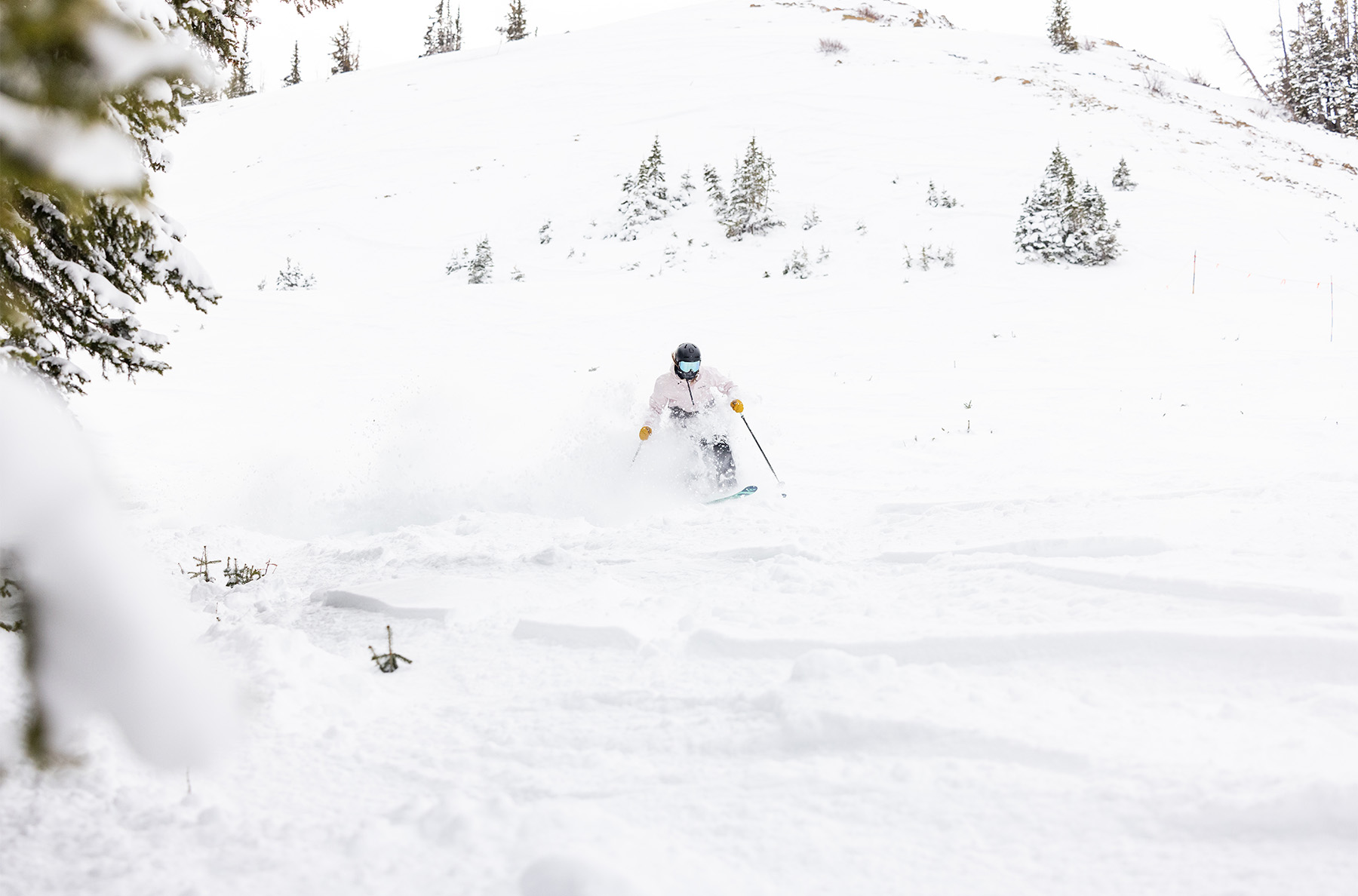
Those looking to make big, fast turns in soft chop should look to heavier skis, but in this class of fairly light, nimble, and playful mid-fat skis, the Atris is totally competitive when it comes to both stability and agility in choppy snow.
Firm Chop / Crud
Looking back at our review of the V2 19/20–21/22 Atris, pretty much everything I said there still holds true for the V3 iteration.
This is not a very damp or stable ski, but it’s also not unusual in those regards, when you’re comparing it to similarly wide, similarly light skis. It can feel kinda harsh and twitchy in firm and rough conditions, and like most skis with similar specs, it feels best in these conditions when you’re making more frequent, more controlled, more conservative turns. Try to open it up in firm crud, and you’re in for a very literal bumpy ride. But keep your speed in check, and the Atris does just fine for its class.
Moguls, Trees, & Tight Terrain
The Atris is still a whole bunch of fun in tight off-piste terrain. Same as the previous version, the latest Atris is a very agile and maneuverable ski, though not the loosest / surfiest when compares to some of the more freestyle-oriented models in its class.
Ski it somewhat forward or even pretty centered, and the Atris’s tails are easy to release and skid around, while its swing weight is very manageable. It’s also got a pretty big sweet spot — you can get pretty far over the shovels and fairly far over the tails before it feels difficult to control.
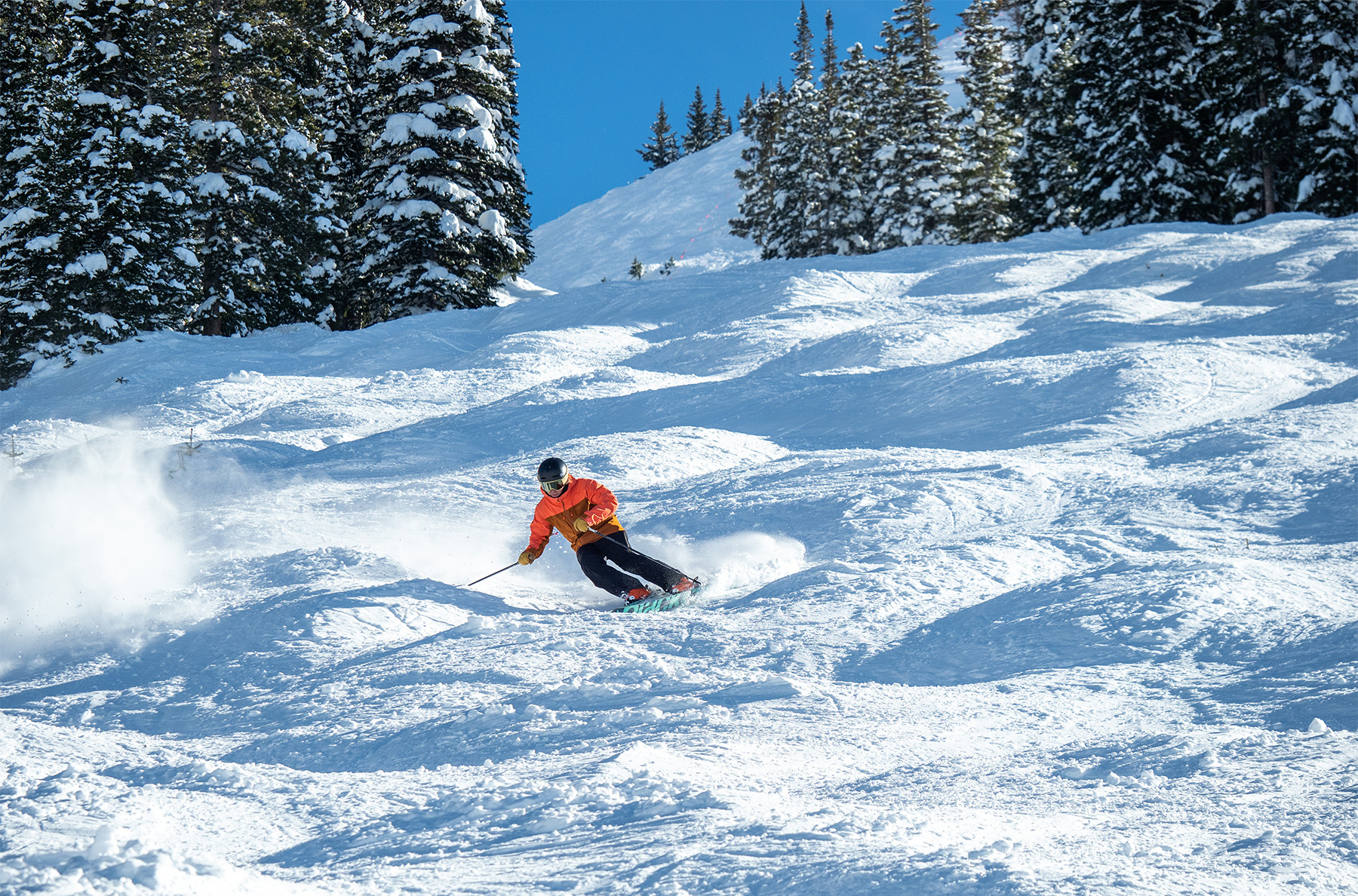
It’s not what I’d pick if I wanted the loosest or most forgiving ski for this sort of terrain, but I think most skiers will be able to get along quite well with it when the line in front of you is tight and tricky.
The main area where I feel the new Atris falls a little bit short of the previous iteration is when skiing tight terrain in soft and/or deep snow; the old version felt just a bit less prone to getting bogged down, but again, it’s pretty subtle. That said, this tradeoff brought with it an upside:
Groomers
This is the main area where I noticed a difference between the V2 and V3 Atris. To be clear, they’re still super similar overall, but the new ski does seem like a slightly better carver. Its edge hold is a bit better, it’s a touch quicker edge-to-edge, and it’s maybe slightly easier to bend and get arcing across the fall line.
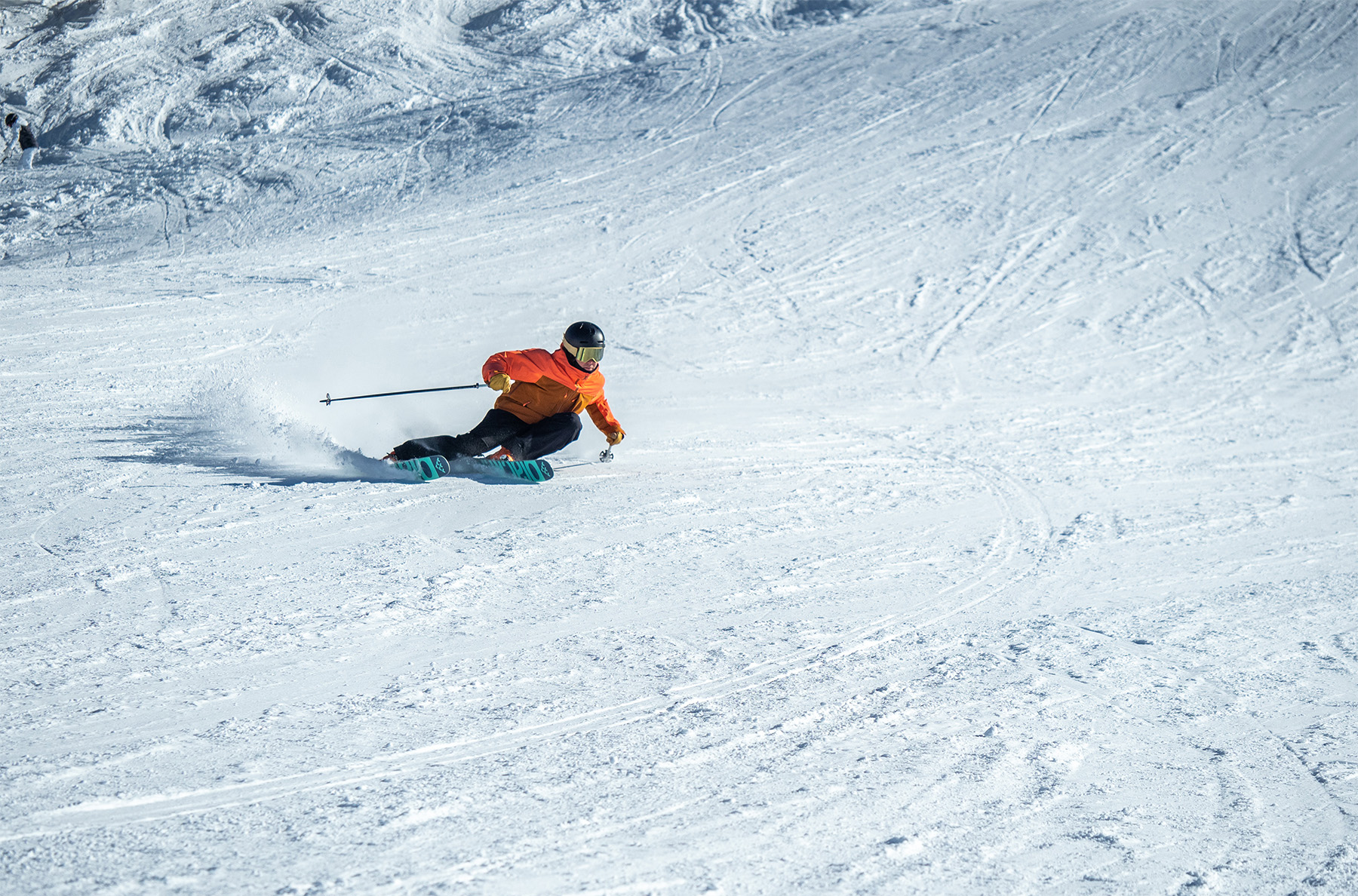
It’s still not the best ~105mm-wide ski when it comes to overall carving performance, but I was impressed by how much I enjoyed it on piste. I struggled to get much edge purchase on it when skiing very firm, borderline icy, man-made groomers at the beginning of the season, but on all other sorts of groomed snow, it provided reliable edge hold while also being very easy to feather in and out of turns of various sizes. It’s not a super engaging ski at low speeds on low-angle slopes, due to its long-ish radius and slightly tapered tips, but it’s definitely not a ski that makes you view all groomers as simply and “ends to a means,” rather than an enjoyable subset of terrain in and of themselves.
Playfulness
The Atris is a pretty playful ski, but it doesn’t feel like one where freestyle performance was the top priority during the design phase. It’s got a pretty low swing weight, it’s fairly loose / surfy, it feels pretty balanced in the air and when skiing switch, and it’s quite lively. On the other hand, it’s not the loosest, softest, or most balanced ski in its class.
So if you’re looking for a ski that’s super easy to butter at slow speeds; one that’s great for landing switch in deep snow; or one that’s incredibly easy to slash around, you’ve got better options. But if you want a ski that checks most of the boxes that constitute the ambiguous “playfulness” trait, while still having a ski that’s intuitive to ski in a directional manner, it should be adequate.
Mount Point
At just a bit under -8 cm from true center, the Atris’s recommended mount point feels very versatile. Mounted there, you can drive it pretty hard through the shovels, but it still lets you ski fairly centered when you feel like it.
To the chagrin of ski designers all around the world, I’m someone who often ends up pushing the bindings of all-mountain skis closer to roughly -6 cm from true center, with the goal of maintaining the ability to ski them with an aggressive directional stance, but with the prospect of being able to ski them a bit more centered / upright when needed, and a more balanced feel in the air. I definitely don’t do this with every ski and many skis feel worse when you move away from their recommended lines, but especially for this class of playful directional skis, I usually give it a try.
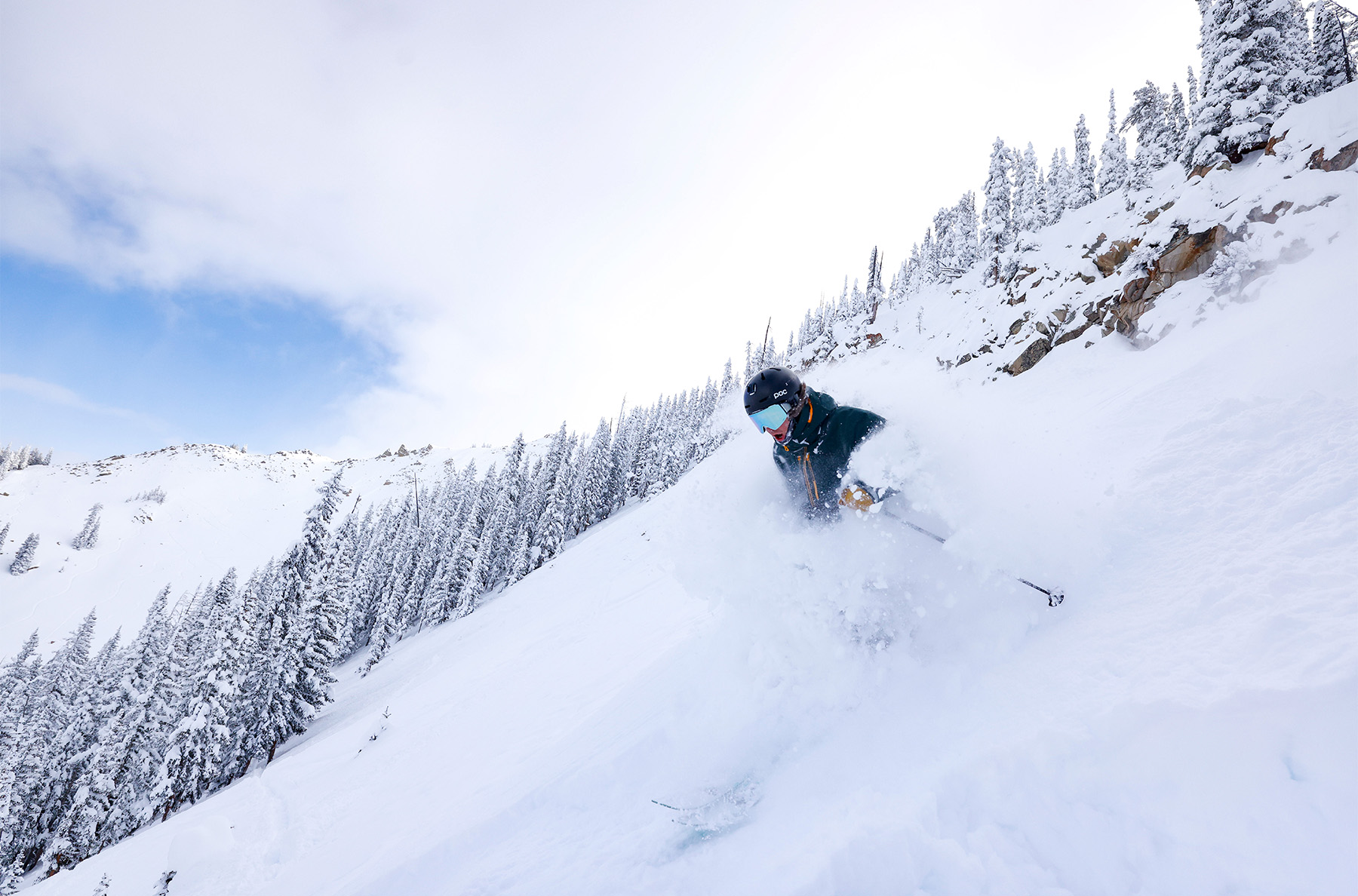
Doing so on the Atris (mounting around -6.5 cm from true center), I was pretty content. I lost a bit of flotation, but that was the only real downside I noticed for my specific skiing style. So the main point is that I think most folks will be just fine with the recommended line, but more playful / freestyle-minded skiers shouldn’t worry about wrecking the ski by mounting it a centimeter or two in front of that line.
Who’s It For?
Same as its predecessors, the latest Atris is a versatile, wider all-mountain ski that is well worth a look from folks who want a ski that’s maneuverable in tight terrain, handles fresh snow really well for its width, and does so all while still being very enjoyable on fairly firm snow. It is not a good choice if you want a very damp, planted, and plush ski that stays super composed when skiing fast in rough snow, nor is it the absolute most playful, forgiving, or surfy ski. But if you know you want something fairly quick and fairly stable but don’t want to go too far into those opposing ends of the spectrum, it warrants strong consideration.
Bottom Line
The previous iterations of the Black Crows Atris were nimble, maneuverable, and playful skis that could still be skied pretty hard in somewhat forgiving conditions. The latest Atris still fits that description, but it feels a touch more versatile on piste, while doing an impressive job of not seriously handicapping its performance in softer, deeper snow.
Deep Dive Comparisons
Become a Blister Member or Deep Dive subscriber to check out our Deep Dive comparisons of the Atris to see how it compares to the previous Atris, Black Crows Camox, Black Crows Corvus, Salomon QST 106, Line Blade Optic 104, Elan Ripstick 106, ZAG Slap 104, DPS Koala 103, RMU Apostle 106, Nordica Enforcer 104 Free, Moment Deathwish 104, Rossignol Sender 104 Ti, Blizzard Rustler 10, Volkl Revolt 104, 4FRNT Devastator, K2 Reckoner 102, Whitedot Altum 104, 4FRNT MSP 107, Sego Big Horn 106, Armada ARW 106 UL, Line Sir Francis Bacon, Shaggy’s Ahmeek 105, & J Skis Hotshot.



I’m always skeptical when I see the words “more accessible” in print, especially without seeing anything about stability. My questions are: how stable is it in comparison to the previous iteration? How’s the edge hold? And it it made in Yugoslavia or Austria?
Brent,
We will definitely address these questions in the full review and Deep Dive of the new Atris once we’ve spent enough time on it. I’ll also make it a priority to compare the 21/22 and 22/23 Atris in our Flash Review, but we need to get this ski on snow first.
The Atris is made in Slovenia, actually.
It would indeed be quite the feat if it was made in Yugoslavia ;)
Brent, pretty sure if Nikolai schirmer doesn’t have a problem with its stability straight lining over 70 mph down icy Norwegian couloirs then I don’t think you will. .
I had a half day on these at a Freeride test weekend in Engelberg at the beginning of April. I have not skied any of the previous versions so cannot compare. It was one of the skis I was looking forward to trying and have to say I loved it, very easy to pivot and quick to change direction. Having said that, the conditions were very low viz skiing one piste marker to the next on very chopped up and snow covered pistes. Only got them in a little pow but seemed to have good float, couldn’t really get any speed up given the conditions. So if I have learned anything from all the Blister reviews I have read, it’s that I can’t tell yet whether this is the ski for me but promising early signs. Look forward to the review.
Thanks for your initial impressions, Cholmeski. Stay tuned for thoughts from us.
Embarrassingly, as much of a ski nerd as I am I did not realise there were changes from the previous version and thought it was just topsheet changes – as a result I never even looked at the numbers so did not realise they were 105 rather than 108!
Would really like to see the comparison between this, new Sender TI and Enforcer 110 Free
How would you compare this to the Moment wildcat 101 or DW104? I’m looking to replaces my rustler 10’s because they are too short but i’m having a hard time deciding what to get because I like the rustlers but i just want something different!
Hey, Jglads – in order to help you out, we’d need some more info here. Please fill out the form for snowsports personalized gear recommendations in the Blister Clubhouse, and we’ll be happy to help you out.
Really interested if there’s improvement in on piste performance. I found the older version fun off piste but to left me wanting more grip on the hard stuff. Would love to hear comparison vs the Hotshot. Thanks.
When do we get a full review on the justis???
How would this compare to say the Dynastar MFree 108?
I about to replace my worn out 18/19 Atris with new one. It is my only back/side country ski, mounted with ATK FR14. So do it all, touring for pow, pow days in resorts, spring skiing, all other types of ski touring. I sm now on 189,7 mounted +2. Do I gain anything going for 184 size? I am 182cm/80kg. Thanks, Miha